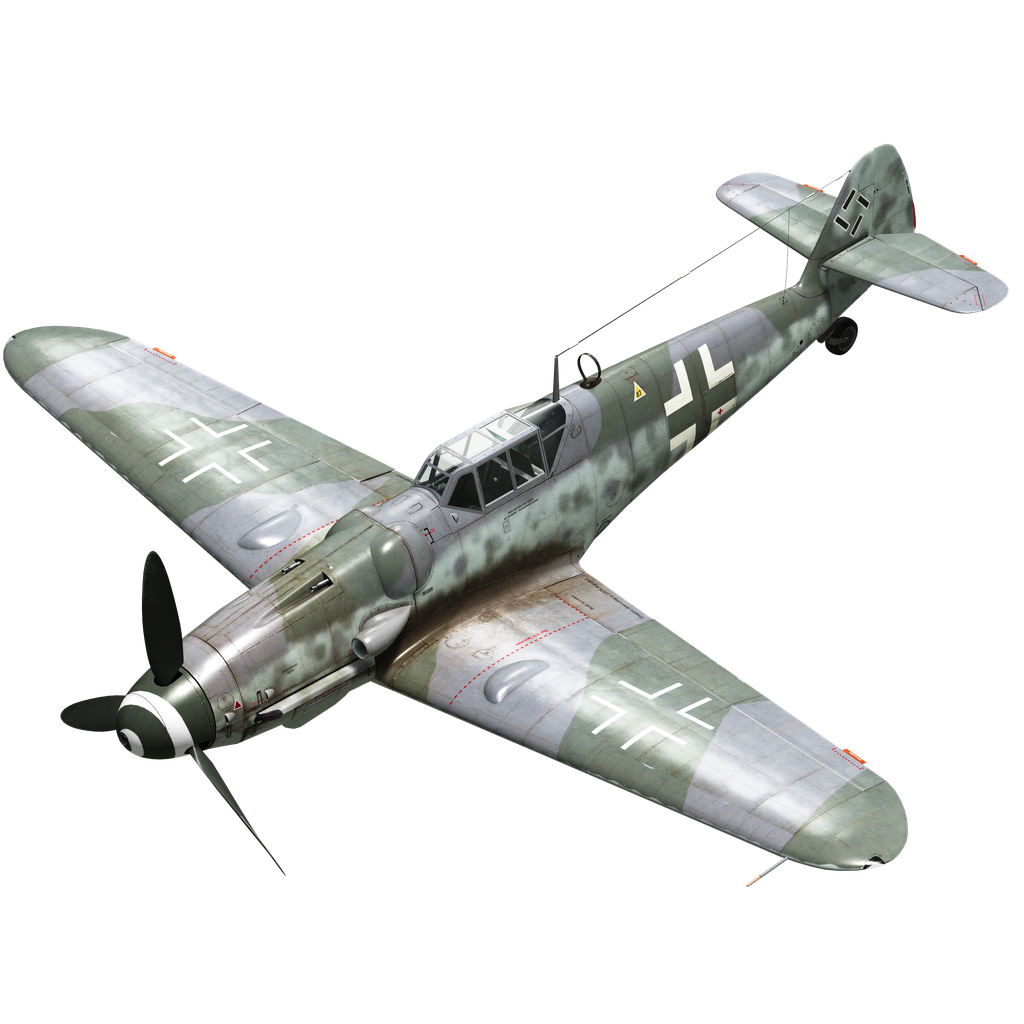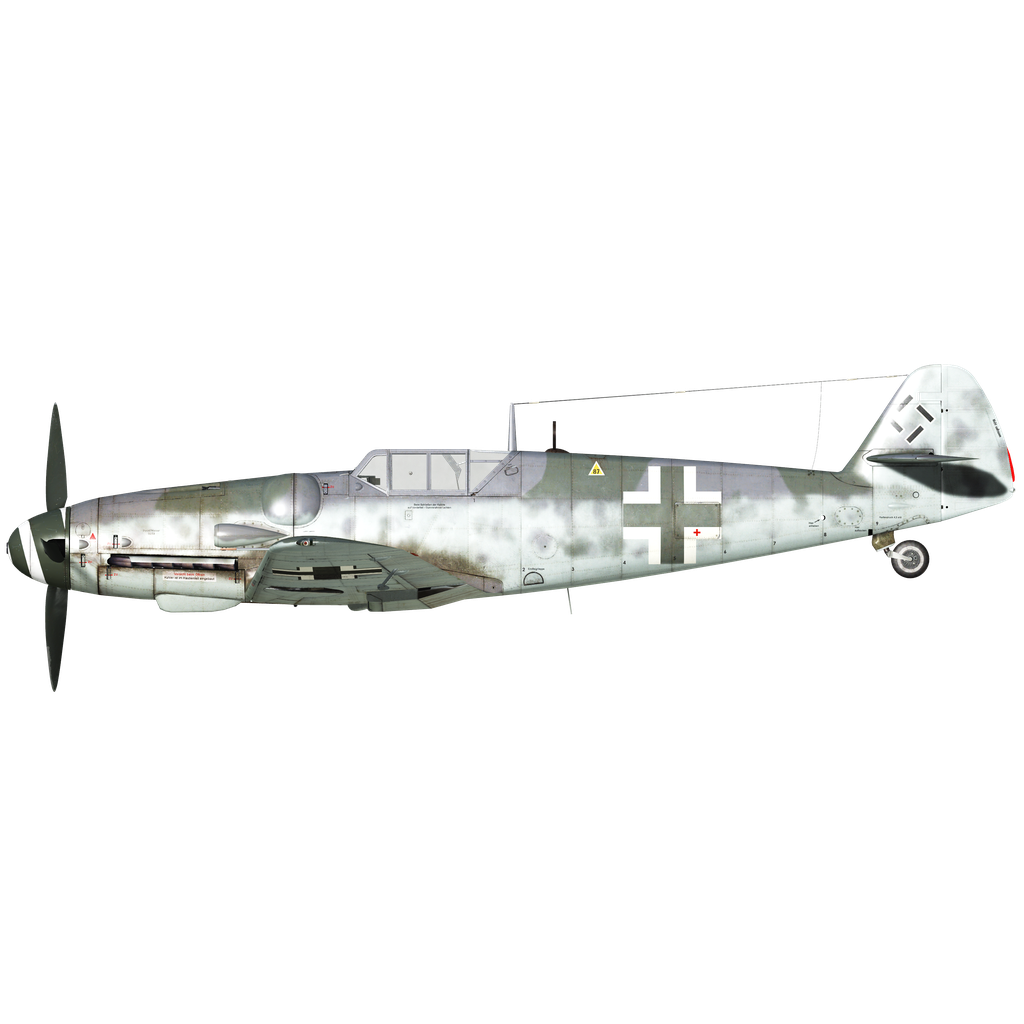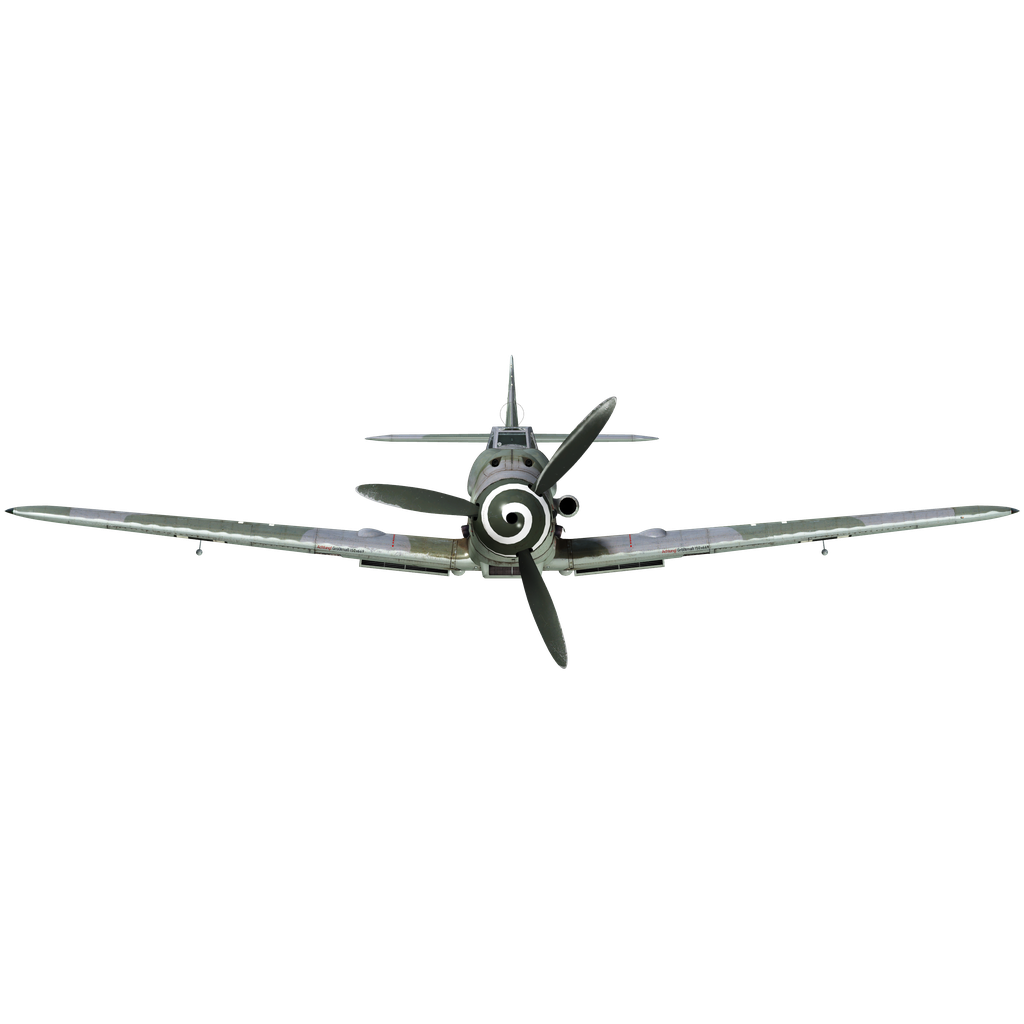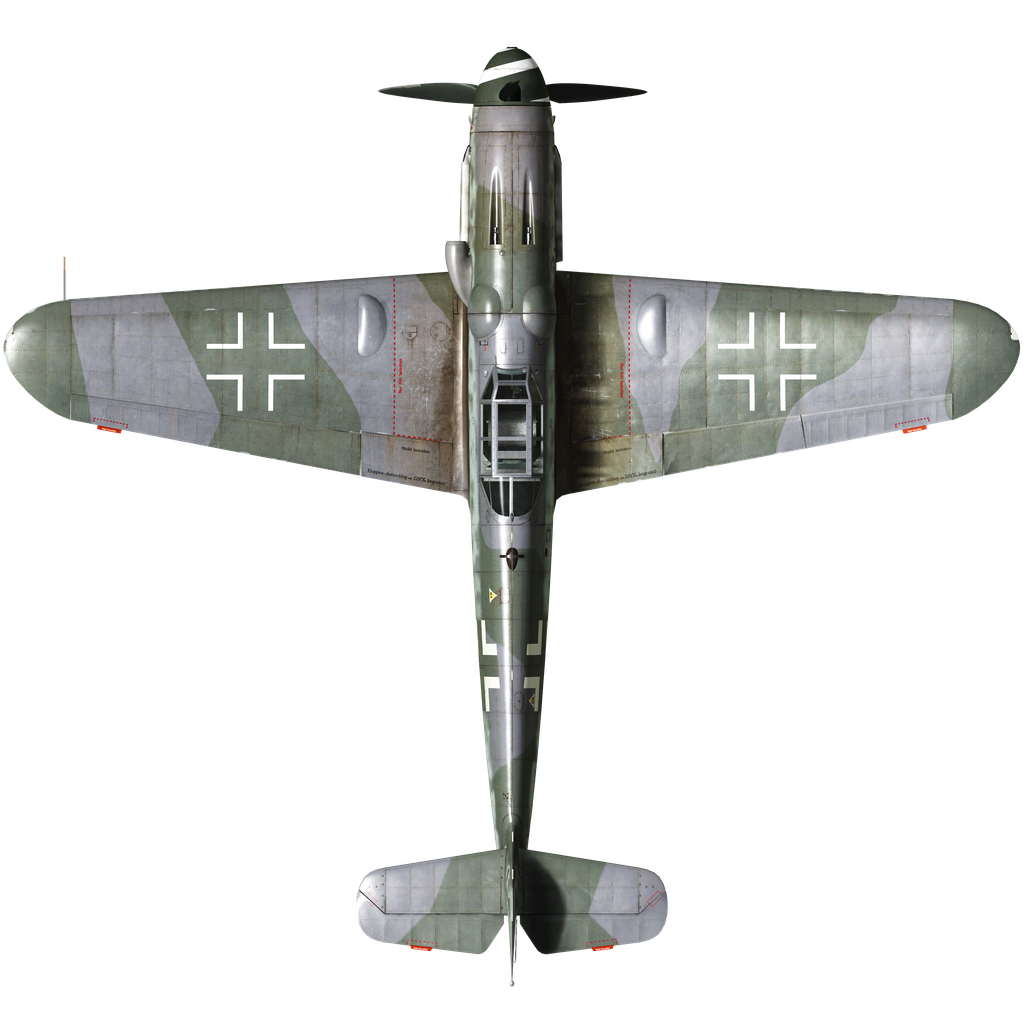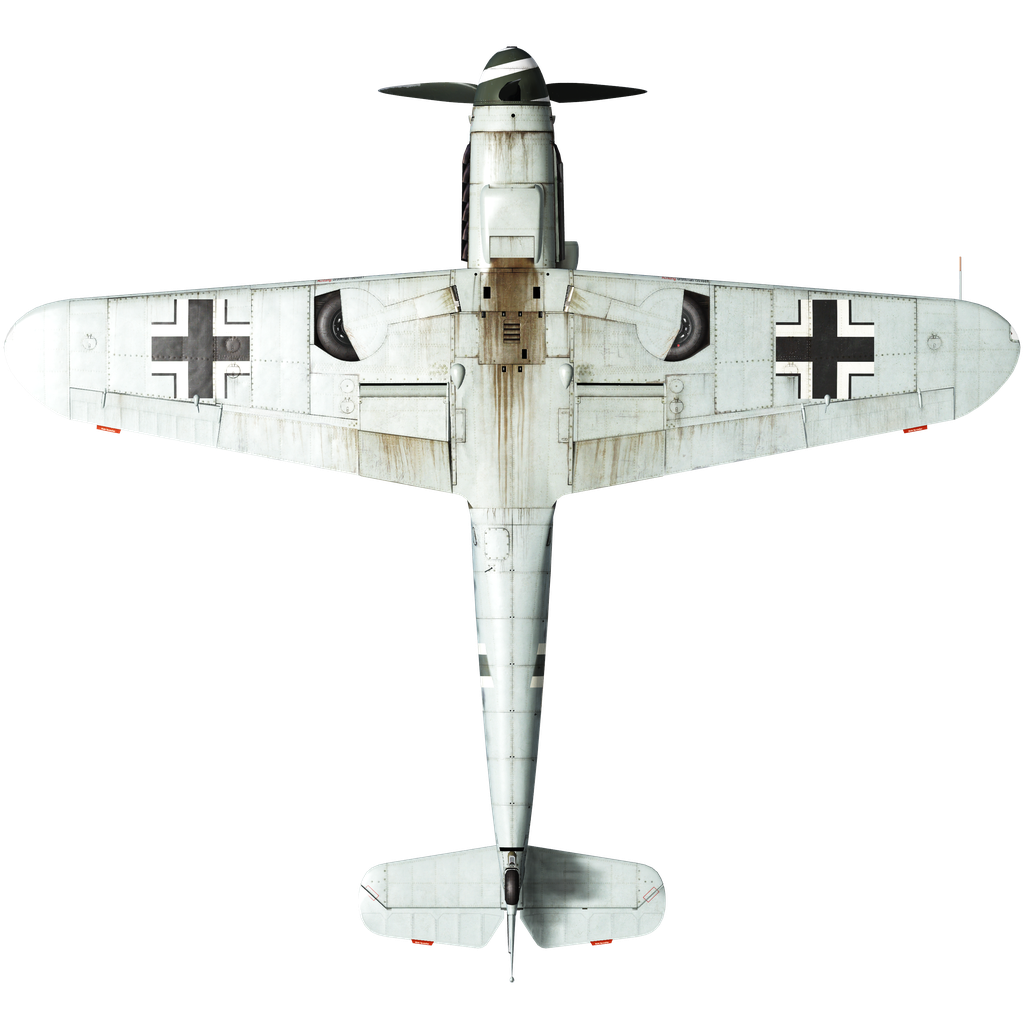The Messerschmitt Bf 109, the most mass-produced fighter of Hitler's Germany, appeared in 1934 in response to the Luftwaffe's request for the latest single-engine monoplane fighter. The prototype's first flight took place on May 28, 1935, and from 1936 to 1942, 6 models were built — from the Bf 109 A "Anton" to the Bf 109 G "Gustav."
In all military campaigns since 1938, the Bf 109 demonstrated clear air superiority over its main rivals — even the relative failure in the Battle of Britain did not shake the Luftwaffe leadership's confidence in the aircraft's capabilities. But in the conditions of rapidly increasing numerical superiority of the Allied fighters, it became simply impossible to shoot down heavy bombers and armored Il-2s with rifle-caliber weapons. Attempts to increase the fighter's firepower by installing cannons in gunpods were unsuccessful. The result was a loss of maneuverability, and it was difficult to engage enemy fighters. The idea of increasing the fighter's firepower by replacing the 7.92 mm machine guns with large-caliber ones was born after numerous complaints from pilots. The installation of MG 131 machine guns with sufficient ammunition required changes in the design of the engine cowls with the addition of characteristic bulges on the sides, which were called "bumps" — this eventually became the nickname of the entire aircraft.
As the most mass-produced modification of the 109, the G-6 underwent many changes during its production run, including the addition of a tailplane with an enlarged tail fin. The first version was made of metal, and later it was made of wood. Over time, the conventional cockpit canopy gave way to the Erla canopy with transparent armor attached to the headrest. Some aircraft were equipped with a tail wheel with increased strut height and different engine types.
The Bf 109 G-6 was equipped with the DB 605A-1 engine as standard, but over time the DB 605AM engines were installed with the option of running on C3 fuel and installing the MW 50 boost system. After factory modernization, the fighter could be upgraded to the G-6/AS standard by installing a new cowl and the DB 605AS engine in various versions (with different fuel options in combination with the MW 50 boost system).
In 1944, the quality of the production deteriorated significantly: rough joints became visible to the naked eye, and many pilots complained about hazy armored glass and difficult handling. In the summer of 1944, a Bf 109 G-6, equipped with MW 50, had a maximum speed of 530 km/h at ground level and 625 km/h at 5,300m, about 15km/h slower than a similar aircraft produced in the fall of the previous year.
-
G-6y - a fighter equipped with a FuG-16ZY radio. Externally, the aircraft differed by the installation of an additional radio antenna under the fuselage or the left wing. This radio allowed more effective operation in an air defense system, marking the position of the aircraft to ground control stations and thus facilitating its targeting of detected enemy aircraft;
-
G-6/ASy - same aircraft but with DB 605AS engine;
-
G-6/N - night interceptor with the FuG 350Z "Naxos" device, which guided the machine to the radiation of American and British airborne radars;
-
G-6/U4/N - similar aircraft with armament upgraded to U4 standard.
The Bf 109 G-6, which was in production from February 1943 to the summer of 1944, was the longest-lived member of the Bf 109 family and its most mass-produced variant: more than 12,200 aircraft of all variants were built. It was believed that the fighter could be used in different climatic conditions from the Arctic Circle to Africa, and could fight effectively both close to the ground, as was often the case on the Soviet-German front, and at high altitude against groups of Allied heavy bombers.
Sources used:
1. W. Creen "The Warplanes of the Third Reich", Galahad Books, 1986
2. "Wings of the Luftwaffe" Translation of W. Green's book "Combat Airplanes of the Third Reich" by A. Firsov, 1993.
3. "Yak-1,7,9,3/ Bf 109 fighters" Journal of Aviation and Cosmonautics, 5-6, 1999.
4. Materials of the site airwar.ru
